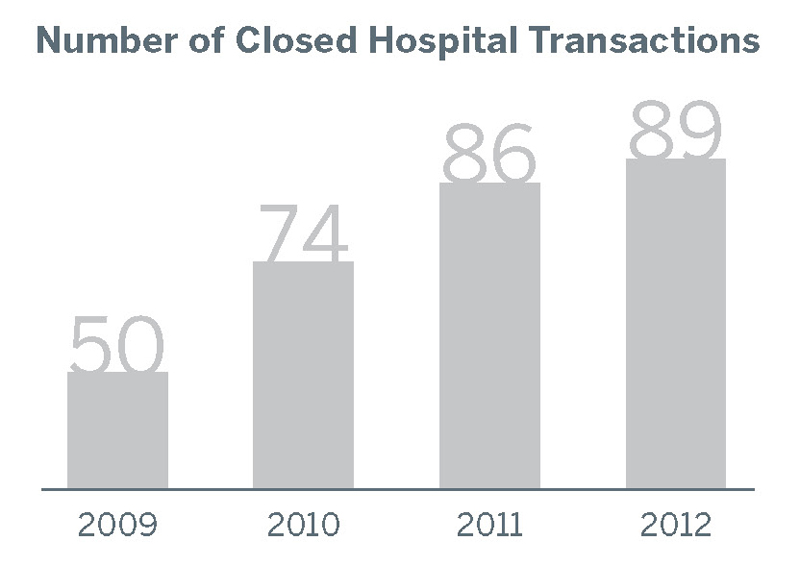Some universities are beginning to sever ties with their academic medical centers (AMCs) in an attempt to better position the education organization and health system in the evolving health care landscape, the Wall Street Journal's Melissa Korn reports.
According to the Association of American Medical Colleges, there are about 120 academic health centers in the United States. Although such institutions account for just 5% of U.S. hospitals, they account for nearly 25% of clinical care based on total hospital revenue.
Why universities are cutting ties with AMCs
According to Korn, AMCs are dealing with unique financial pressures in the new health care landscape. For example:
- University-affiliated hospitals typically charge more for services than community hospitals because they are funding research initiatives and teaching new generations of clinicians on top of providing health services. As a result, exchange-based insurance networks created under the ACA have been less likely to include the hospitals in their networks.
- Many teaching hospitals are located in urban areas, where a high proportion of the patients they see are covered by Medicaid or lack health coverage. With most academic medical centers reporting operating margins between 3% and 5%, many universities have expressed anxiety about upcoming cuts to government-funded grant programs for uncompensated care.
By spinning off medical centers, universities can avoid exposure to the risk associated with the health care provider entities. Schools like Vanderbilt University and Emory University recently have distanced themselves from their medical centers in favor of "returning to their teaching roots," Korn writes.
Health care and education are "totally different businesses," says Vanderbilt Chancellor Nicholas Zeppos, noting that cutting ties with the hospital can allow the university to "really focus our energy, attention, and resources more on that timeless [educational] mission."
Why Vanderbilt Medical Center is breaking off from its university
Similarly, Michael Mandl, CEO of Emory Healthcare, adds, "You get away from the university mission at some point if you build out the full spectrum of community services that are needed to have a successful health system of tomorrow."
Meanwhile, the decisions can give AMCs more flexibility in operations and capital investment plans.
Experts say certain types of university-affiliated hospitals are most at risk of financial instability. Peter Fine—CEO of Banner Health, which acquired struggling University of Arizona (UA) Health Network last month—says, "Smaller, midmarket academic medical centers are among the most distressed types of hospitals nationwide." UA President Ann Weaver Hart said of the affiliation, "The intention is to reduce risk going forward."
Not all universities following suit
Still, most universities continue to remain affiliated with their health systems or are actively take steps to more closely align their medical facilities with their main campuses.
How AMCs boosted physician productivity
For example, Loma Linda University in the next few months is expected to announce a single governance structure for its schools, hospital system, and physician practices. Last year, the university reported about $304 million in revenue, while Loma Linda University Medical Center's revenue was more than triple that, at $1.08 billion.
Richard Hart, president of Loma Linda University Health, says, "We are choosing to glue this whole thing together" to increase efficiency across the systems.
At the end of the day, University of Mississippi Chancellor Daniel Jones says the trend is cyclical and arises when there is financial uncertainty. "Every time the environment becomes unstable, universities that own their systems are trying to sell them and universities that don't are trying to buy them. Everybody's unhappy with their circumstances" (Korn, Wall Street Journal, 4/22).
The takeaway: An increasing number of universities are disassociating from their affiliated hospitals as they work to adjust strategy to meet the needs of the evolving health care landscape.
M&A—To What End? Five Characteristics of Intentional Strategy
We are in the midst of the most significant period of provider consolidation in the last 30 years.
The most successful M&A deals are focused on delivering a better product to patients and purchasers, rather than insulating the system from competition. Find out what separates these deals from the rest.
Don't miss out on the latest Advisory Board insights
Create your free account to access 2 resources each month, including the latest research and webinars.
Want access without creating an account?
You have 2 free members-only resources remaining this month remaining this month.
1 free members-only resources remaining this month
1 free members-only resources remaining this month
You've reached your limit of free monthly insights
Become a member to access all of Advisory Board's resources, events, and experts
Never miss out on the latest innovative health care content tailored to you.
Benefits include:
You've reached your limit of free monthly insights


